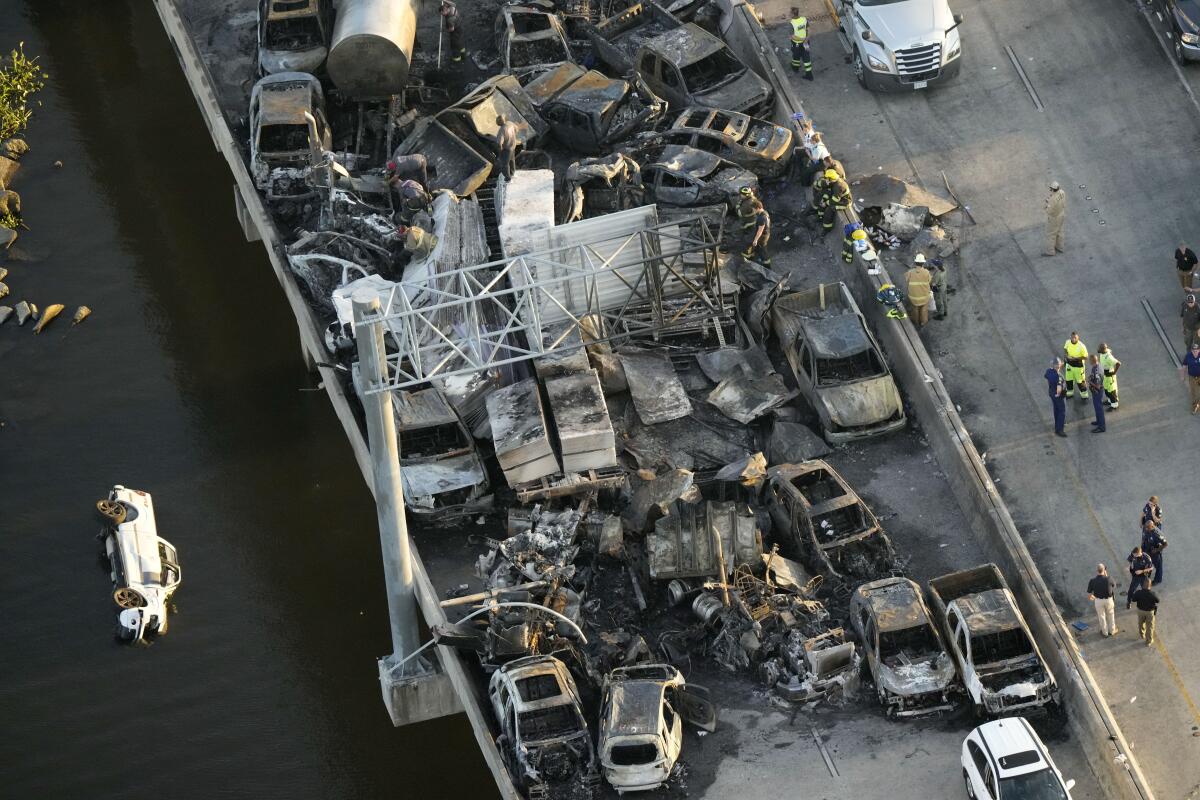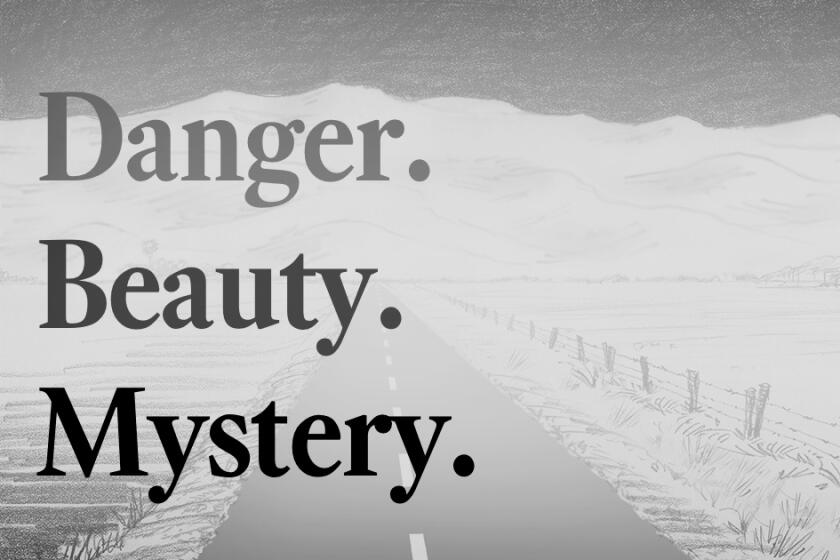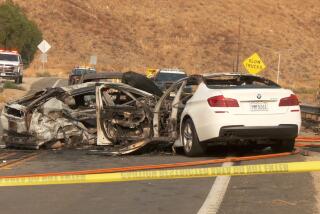At least 7 dead in massive ‘superfog’ vehicle pileups in Louisiana, authorities say

- Share via
NEW ORLEANS — At least seven people were killed in Louisiana after a “superfog” of marsh-fire smoke and dense fog caused multiple massive car crashes involving 158 vehicles, authorities said.
Crews worked into Tuesday morning clearing the wreckage of the giant crash Monday from Interstate 55 near New Orleans, in which at least 25 people also were injured, officials said.
Lance Scott was among the drivers caught in the wreckage. The 51-year-old had been driving his daughter to an airport when the fog thickened, as if a “whiteout on a ski slope.” He slammed on his brakes, narrowly avoiding the cars in front of him, but from behind he heard “the most horrendous clank of metal.”
“It was, ’Bang. Bang. Bang.’ It just went on ... for probably 45 seconds,” Scott said. “As every second went by, the clanking of the metal got a little bit fainter, which told me it was backing up, so I knew there was layers and layers of collisions.”
Scott turned to his 24-year-old daughter, an intensive care unit nurse, and said, “There’s going to be a lot of people who need help, and I need you to go out and do what you do.”
With the ominous sounds of crackling fire in the background and the fog slowly lifting to reveal the extent of the crash, Scott and his daughter helped people out of their cars. Some had broken collarbones, and one had to wait for first responders to bring the Jaws of Life.
Videos of apocalyptic-type scenes from the aftermath of the wrecks showed a long stretch of mangled and scorched cars. Vehicles were crushed, rammed under one another and some engulfed by flames. Many people initially stood on the side of the road or on the roof of their vehicle looking in disbelief at the disaster, while others cried out for help.
Scott said there was “great camaraderie” as people sprang into action to help others. With drivers warning others about a nearby fire from the crash, people moved away from the wreckage as they waited for 45 minutes for paramedics to reach them and for transportation off a bridge.
Another driver, Christopher Coll, said he was already braking when a pickup truck “drove up on top of my work trailer and took me for a ride.”
This winter the tule fog returned to California’s Central Valley. Memories of the ground fog tie generations.
Coll said he could smell smoke as he heard the sounds of crashing cars and popping tires. He was able to kick open his passenger door to escape and then helped others — pulling out one person through a car window.
Clarencia Patterson Reed was also in the wave of wrecked cars as she drove to Manchac with her wife and niece. Reed told the newspaper that she could see people waving their hands for her to stop, but when she did, her car was hit from behind and on the side by two other vehicles.
“It was ‘Boom. Boom.’ All you kept hearing was crashing for at least 30 minutes,” Reed said. She was able to scramble out of her car, but her wife was pinned inside and injured her leg and side. Others stepped in to help, she said.
School buses were summoned to transport stranded motorists. While 25 people were transported to the hospital, with injuries ranging from minor to critical, many others sought medical aid on their own, authorities said. Police told reporters at the scene that one vehicle went over the highway guardrail and into the water, but the driver escaped unharmed.
Gov. John Bel Edwards asked for prayers “for those hurt and killed” and issued a call for blood donors to replenish dwindling supplies.
We take a look at the source of dense tule fog and the factors that are causing people in California’s great Central Valley to see a little less of it.
By Tuesday morning, crews were removing the final group of vehicles and began a surface cleanup of the area, authorities said. State police were coordinating with the state’s transportation department to have the bridge inspected.
The National Weather Service said there were multiple wetland fires in the region Monday, and smoke from the fires mixed with fog to create a “super fog.”
Smoke from the Bayou Sauvage Urban National Wildlife Refuge had been thick enough that the city announced locations where free masks could be picked up in eastern New Orleans and in the Algiers neighborhood on the west bank of the Mississippi River.
Hazardous driving conditions Tuesday morning prompted several schools in the area to close or delay, as tow trucks continued to haul debris off the interstate.
More to Read
Sign up for Essential California
The most important California stories and recommendations in your inbox every morning.
You may occasionally receive promotional content from the Los Angeles Times.















